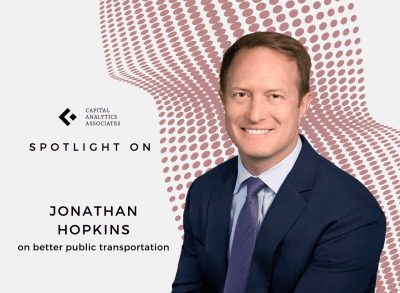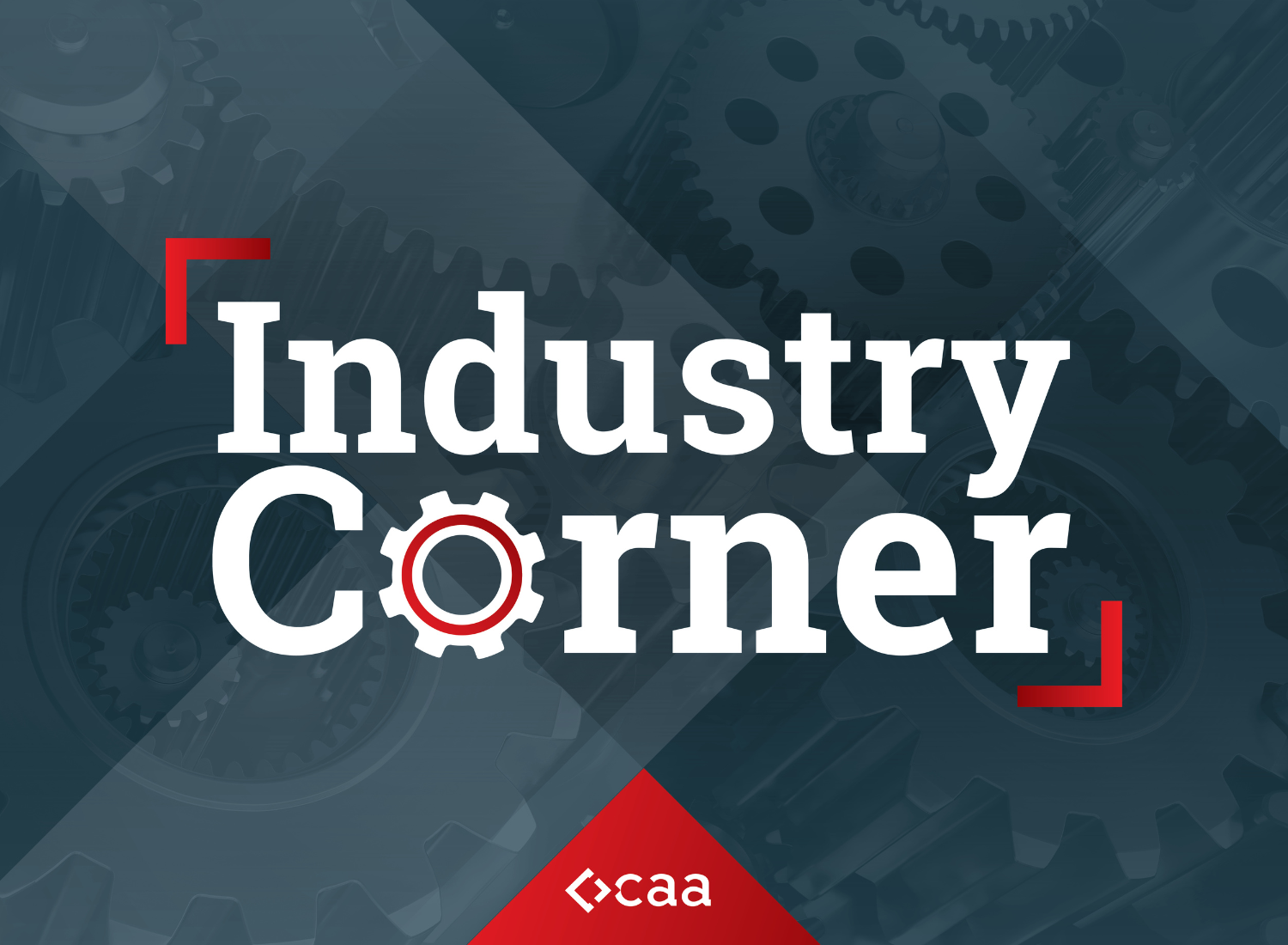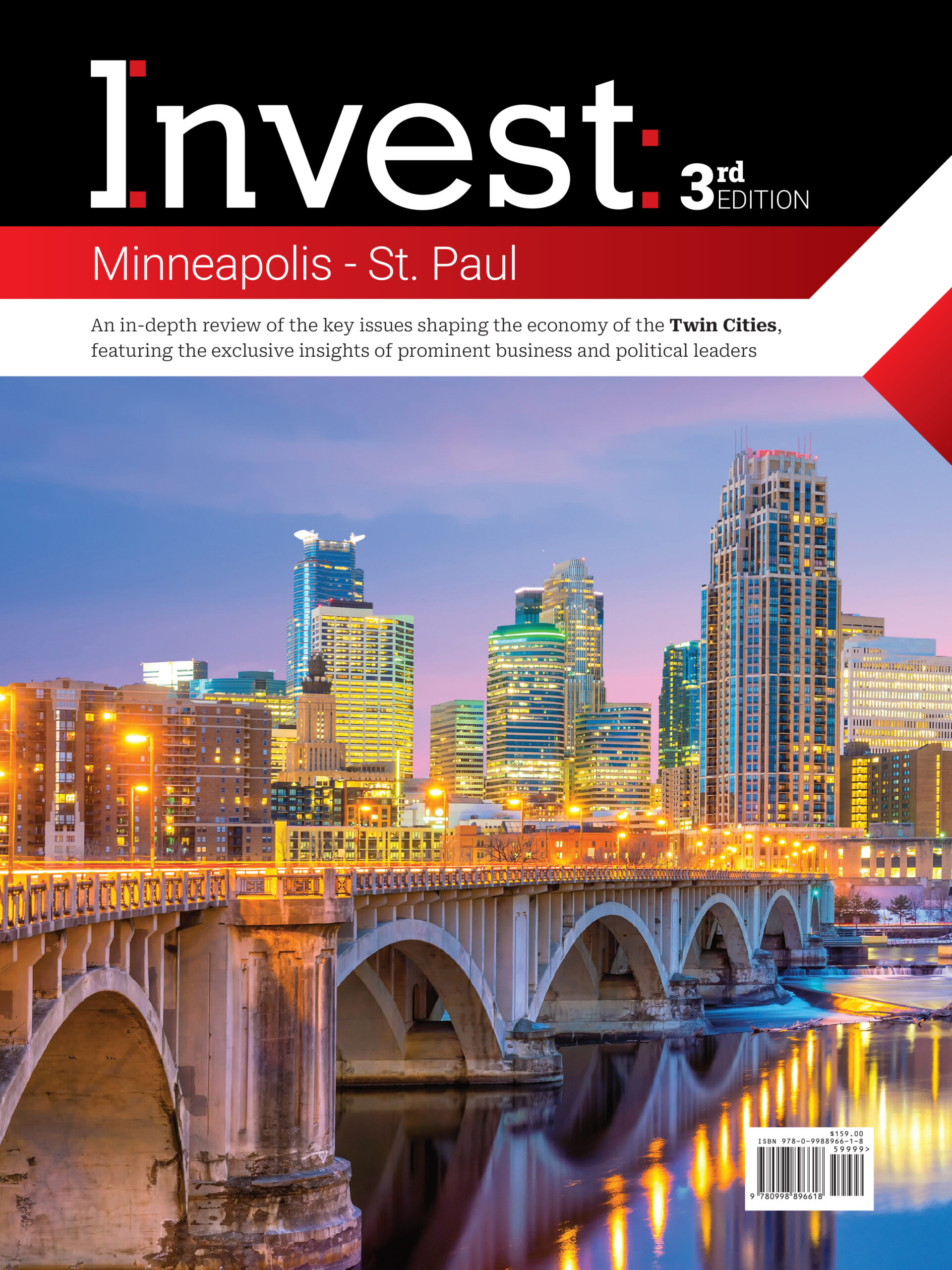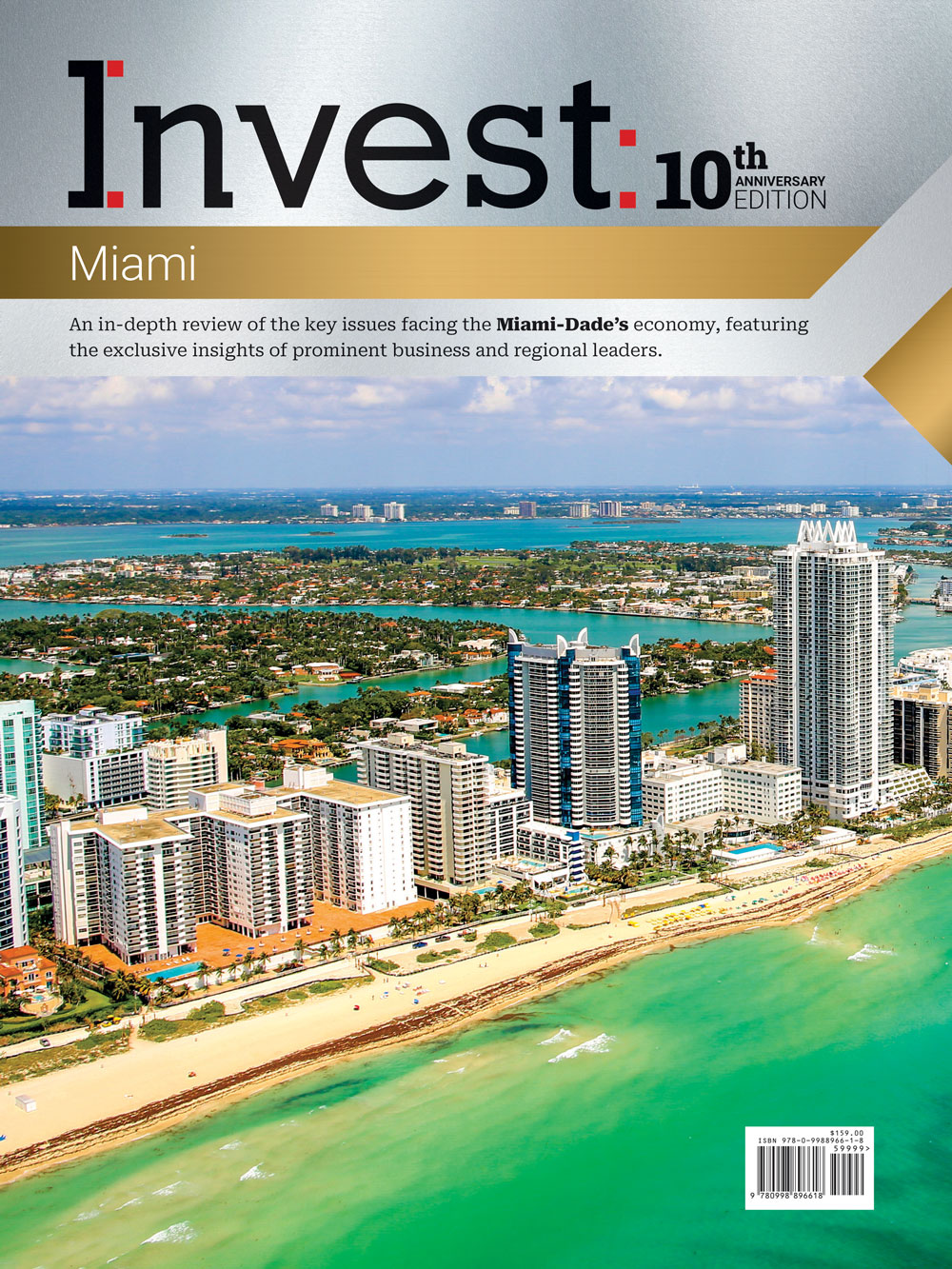Spotlight On: Jonathan Hopkins, Executive Director, WPB Mobility Coalition (WPBgo)
 November 2023 — Invest: spoke with Jonathan Hopkins, executive director of the nonprofit WPB Mobility Coalition (WPBgo), about why Florida needs better public transportation in such a “car friendly” state. “Car-friendly is fine. The challenge is being in a popular place that’s car-only. In a popular place, car-only means congestion-friendly. A car-only transportation system is a brittle, unreliable system where the smallest disruption like a car breakdown or an accident can cause monumental delays,” he said.
November 2023 — Invest: spoke with Jonathan Hopkins, executive director of the nonprofit WPB Mobility Coalition (WPBgo), about why Florida needs better public transportation in such a “car friendly” state. “Car-friendly is fine. The challenge is being in a popular place that’s car-only. In a popular place, car-only means congestion-friendly. A car-only transportation system is a brittle, unreliable system where the smallest disruption like a car breakdown or an accident can cause monumental delays,” he said.
What are some of the key issues WPB GO is looking at?
We are addressing a county and city that are experiencing rapid growth due to jobs migration and an attractive quality of life. People and employers want to move here. We added over 26,000 people in our county from 2020 to 2022, and we see that trend continuing. Only 4-5% more traffic can have a huge impact on commuters and commercial traffic–taking a road from free flowing to congested. But expanding roads to accommodate that growth with everyone driving costs tens or hundreds of millions of dollars for each few miles of roads expanded. Because our city and county are increasingly popular, we are working hard to smartly improve the efficiency of how we get around. Our long term economic prosperity and quality of life depend on it. One of the ways we are doing this is working with employers. They can have a significant impact on making our roads be more efficient through the benefits and policies they control. If one company did this work alone, the difference it would make would be a drop in the ocean. But if we all work together, we can make real waves in accommodating more people with existing infrastructure. For those that have to drive, we believe all of them would appreciate fewer bumpers in front of them on the road.
How are you changing the perspective of Florida as a “car friendly” state?
Car-friendly is fine. The challenge is being in a popular place that’s car-only. In a popular place, car-only means congestion-friendly. A car-only transportation system is a brittle, unreliable system where the smallest disruption like a car breakdown or an accident can cause monumental delays. This results in people being late for work, meetings, and their kids’ after-school activities. It becomes a time thief, where everyone has to leave earlier and earlier, getting less time with their families at home or being productive at work. Instead, they spend more and more time on the frustrating process of just getting there.
A car-only system is also very expensive. Each car costs the average household over $1,000 per month in gas, maintenance, insurance, and depreciation. Florida averages more than 1 car per person, contributing significant costs. A car-only system requires a lot of space, forcing people to live farther away with longer commutes. It results in both higher housing and transportation costs for everyone than one where some people can live closer to their work without cars.
A car-only system is also a more dangerous system. People are 30x to 60x safer traveling by bus or train than traveling by car. In Florida, our road fatality rate is worse than Colombia–the country with the most dangerous roadways in the OECD.
Because our roads are packed with no place to expand, WPBgo is working with employers to help people save money, time, and frustration by helping employees other options to get around. We believe that increased interest in and utilization of public transit lines and safe places to bike and walk will result in more investments in those areas. The more people that choose these money-saving, safer options, the more people our transportation system can accommodate in a reliable manner. Everyone benefits from fewer bumpers ahead of us on the road.
What programs or incentives are you rolling out to get people out of their cars?
This winter we are starting a pilot program with 25 employers to test how incentives and information will shift employee behaviors. This will involve improved technology tools for employees to figure out new ways to get around and provide feedback on commute solutions that work for them. All of this support is free to employers.
We plan to test incentive programs to help people save money and get to and from Downtown without their car. This includes finding ways to help more people try out Tri-Rail, Brightline, carpooling, vanpooling, or the bus for the first time. One of the incentive programs we intend to roll out is a transit pass program intended to put a pass in the pocket of every employee. In Columbus, Denver and Seattle, these programs have had a notable impact and relieved parking pressures and congestion. This saves space on our roads because a bus full of 40 or more people takes the space of just 2 people in cars, and requires zero parking.
Meanwhile, we will continue to work with the West Palm Beach Downtown Development Authority (DDA) and the City to promote use of and optimize the Circuit on-demand service in Downtown West Palm Beach that helps people get around once they are in Downtown. These all electric vehicles result in pooled rides 40% of the time and are very low cost to operate. Demand is off the charts with ridership up 176% year over year. We hope to continue to make getting around Downtown car-free a breeze.
How do you see the area growing and evolving?
West Palm Beach continues to be a place where more and more people want to be. To maintain quality of life, living here also means having great amenities without a short walking distance, whether it be a grocery store, shopping or a Brightline station. That means the vertical growth of our city is likely to continue. One of the challenges we face across the country is rapidly increasing costs of housing. It’s worth noting that if each unit in a new apartment building requires 2 parking spaces, that can easily increase the costs of each apartment by $100,000. Giving people the opportunity to use their cars less and own fewer of them is a way to help families balance their budget.
What’s exciting is that an impressive 33% of people say they arrive at their Downtown destination without a car (often walking from home or hotel), which is up from 25% in just two years. Even more people (40%) say they prefer to get to their destination in Downtown without their car. The demand for these solutions is there. We just have to make getting around without a car viable for more people.
To enable this smart growth, which pays for itself by attracting more jobs and more residents, it’s imperative that transportation operations grow in parallel. Many people coming to West Palm Beach come from communities with much more extensive transit systems, and they expect some of the same here. Others–even long standing residents–are finding that the increasing cost of living makes them wish the transit system, housing market, and biking network worked for them. Transportation and housing is something we must address together. Because everyone works downtown, from dishwashers to CEOs, we have to work on housing and transportation solutions that work for and are affordable for everyone. Relieving the pain of getting around by providing efficient options that everyone can use will help us continue to thrive in the 21st Century and continue to be the place that everyone wants to call home.
What are the key priorities for WPB GO?
Our immediate priority is to help employers to work in unison to reduce their traffic impacts. When we work together, we can help Downtown West Palm Beach accommodate more workers and more visitors without increasing the number of cars needed to do so. Our long term goal is to help people have true options–mobility freedom–to get around in a way that works for them.
As we mentioned, 40% of those in Downtown West Palm Beach say they want to get to their destination without their car, and 33% actually did. Imagine if they all drove! Our roads wouldn’t be moving. So our goals ultimately lead to a community where the transit, biking and walking experiences are so good that a significant population can find those ways of getting around preferable to driving and contributing to congestion. The freedom to choose something easier, cheaper or faster is a powerful incentive.
In the long run, these efforts are what will help us thrive as a community with continued economic prosperity, high quality of life, and affordability so people who work in our county can live in our county.
For more information, visit:













